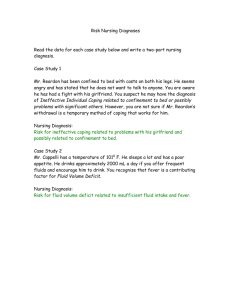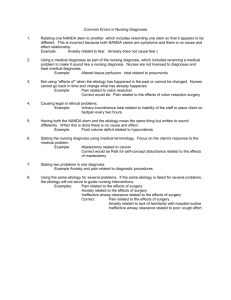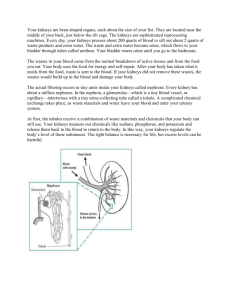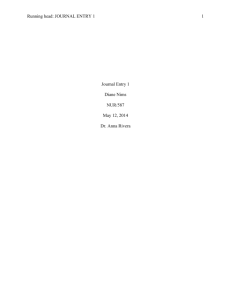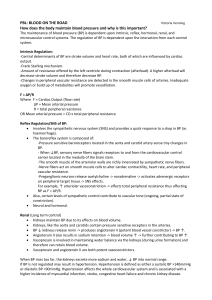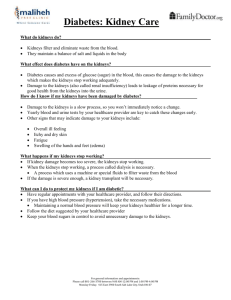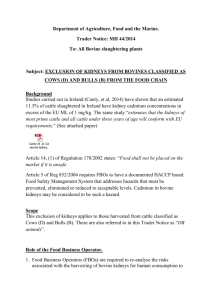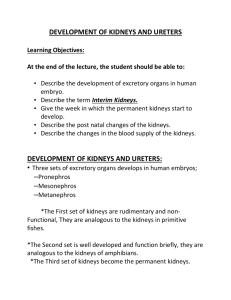Renal Failure Case Study
advertisement
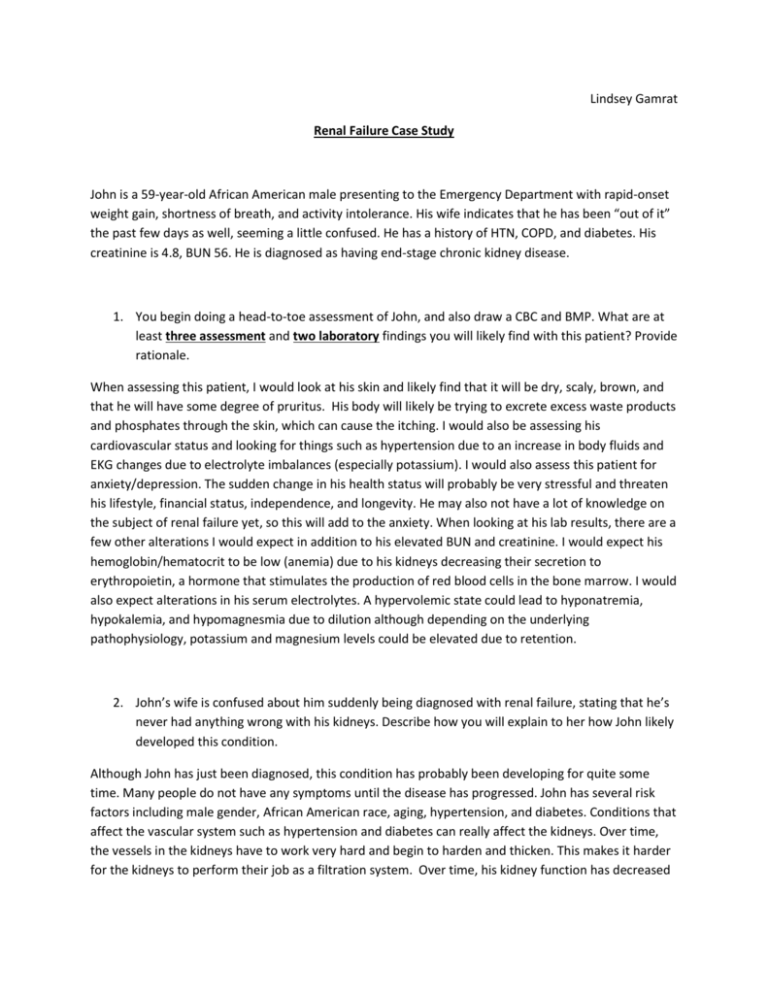
Lindsey Gamrat Renal Failure Case Study John is a 59-year-old African American male presenting to the Emergency Department with rapid-onset weight gain, shortness of breath, and activity intolerance. His wife indicates that he has been “out of it” the past few days as well, seeming a little confused. He has a history of HTN, COPD, and diabetes. His creatinine is 4.8, BUN 56. He is diagnosed as having end-stage chronic kidney disease. 1. You begin doing a head-to-toe assessment of John, and also draw a CBC and BMP. What are at least three assessment and two laboratory findings you will likely find with this patient? Provide rationale. When assessing this patient, I would look at his skin and likely find that it will be dry, scaly, brown, and that he will have some degree of pruritus. His body will likely be trying to excrete excess waste products and phosphates through the skin, which can cause the itching. I would also be assessing his cardiovascular status and looking for things such as hypertension due to an increase in body fluids and EKG changes due to electrolyte imbalances (especially potassium). I would also assess this patient for anxiety/depression. The sudden change in his health status will probably be very stressful and threaten his lifestyle, financial status, independence, and longevity. He may also not have a lot of knowledge on the subject of renal failure yet, so this will add to the anxiety. When looking at his lab results, there are a few other alterations I would expect in addition to his elevated BUN and creatinine. I would expect his hemoglobin/hematocrit to be low (anemia) due to his kidneys decreasing their secretion to erythropoietin, a hormone that stimulates the production of red blood cells in the bone marrow. I would also expect alterations in his serum electrolytes. A hypervolemic state could lead to hyponatremia, hypokalemia, and hypomagnesmia due to dilution although depending on the underlying pathophysiology, potassium and magnesium levels could be elevated due to retention. 2. John’s wife is confused about him suddenly being diagnosed with renal failure, stating that he’s never had anything wrong with his kidneys. Describe how you will explain to her how John likely developed this condition. Although John has just been diagnosed, this condition has probably been developing for quite some time. Many people do not have any symptoms until the disease has progressed. John has several risk factors including male gender, African American race, aging, hypertension, and diabetes. Conditions that affect the vascular system such as hypertension and diabetes can really affect the kidneys. Over time, the vessels in the kidneys have to work very hard and begin to harden and thicken. This makes it harder for the kidneys to perform their job as a filtration system. Over time, his kidney function has decreased to the point where it is now and he has seen symptoms. When his kidneys can no longer filter his blood adequately, waste products can build up and cause the problems that he is experiencing. 3. What are three nursing diagnoses that will likely apply to John? Please name a nursing intervention (can be collaborative or independent) for each diagnosis. One nursing diagnosis that would apply to John would be excess fluid volume related to the kidneys being unable to excrete the excess fluid. A nursing intervention that could potentially help this problem would be to restrict his daily fluid intake. Another nursing diagnosis applicable to John’s situation is risk for electrolyte imbalance. A nursing intervention needed for this is to continue to monitor serum electrolytes as well as monitor for effects of the imbalances (EKG changes, tetany, numbness, tingling, etc.) One other nursing diagnosis that will most likely apply to John is anxiety related to a major change in his health. A diagnosis of end stage CKD is very stressful because the person’s lifestyle, role, finances, independence, and life are all at risk. Nursing interventions to decrease anxiety include education on the disease and its treatments as well as referrals to resources such as support groups, case management, etc.

